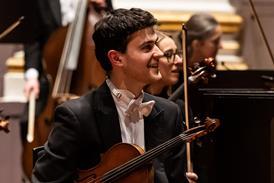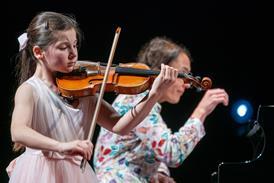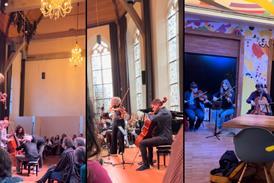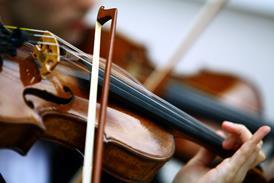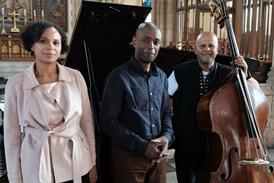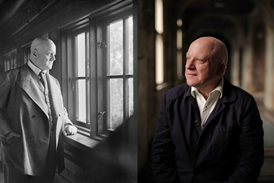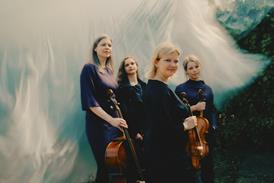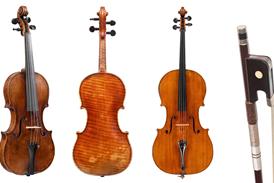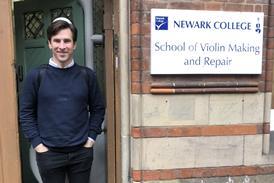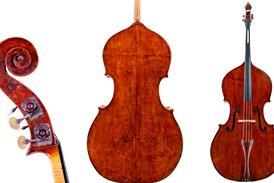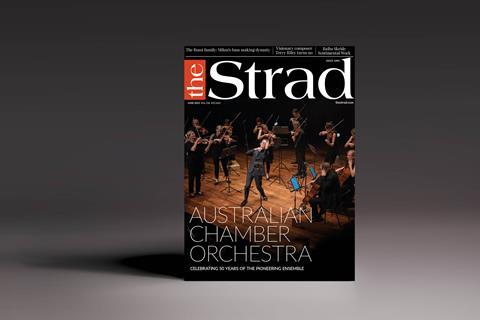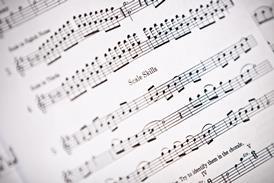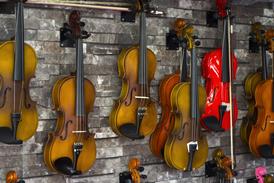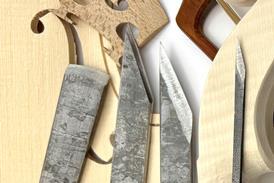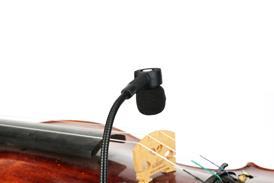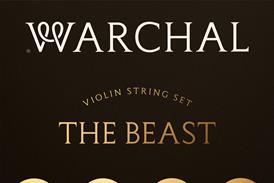Technical – Page 8
-
 Focus
FocusWhat to do if your violin pegs keep slipping or sticking
Korinthia Klein presents a simple player’s guide to violin maintenance, without encroaching on luthiers’ territory
-

-
 Premium ❘ Feature
Premium ❘ FeatureTrade Secrets: Making a Parisian-eye ring
A step-by-step guide to this intricate part of bow repair
-
 News
NewsInaugural Philharmonie de Paris lutherie competition names winners
A total of 89 cellos were submitted for the competition, to celebrate excellence in the field and promote emerging talent
-
 Premium ❘ Feature
Premium ❘ FeatureTrade Secrets: A tool to measure string tension
How luthiers can create a device to find the optimum tension of a string – and a few good reasons to use it
-
 Video
VideoThe violin made from indigenous African tonewoods
Listen to the violin made from Knysna Blackwood and Hardpear
-
 Premium ❘ Feature
Premium ❘ FeatureTrade Secrets: Making purfling
A guide for luthiers who prefer to create their own strips to use in their instruments, rather than buy them ready-made
-
 Premium ❘ Feature
Premium ❘ FeatureWood treatment: The magic touch
New research has revealed how Stradivari, Amati and Guarneri ‘del Gesù’ all used tonewood that had been heavily treated with chemicals prior to carving. Wenjie Cai and Hwan-Ching Tai explain the study’s findings, and suggest it could indicate that the Cremonese makers were influenced by the contemporary alchemical beliefs
-
 Premium ❘ Feature
Premium ❘ FeatureTrade Secrets: Making an invisible neck graft
A procedure that takes a little longer than the standard method, but results in an almost undetectable fitting
-
 Premium ❘ Feature
Premium ❘ FeatureSound Sculptor: Sam Zygmuntowicz
Ten years on from Strad3D, project co-developer Sam Zygmuntowicz talks to Chloe Cutts about the impact of the groundbreaking study of violin form and function within the context of the story of American lutherie and his own journey as a maker and researcher. From January 2017
-
 Premium ❘ Feature
Premium ❘ FeatureTrade Secrets: Making a custom cutter for a Parisian-eye ring
A necessary piece of equipment to tackle an uncommon problem in bow repair
-
 Premium ❘ Feature
Premium ❘ FeatureMaking Matters: Fifth harmonies
If 5ths are driving you nuts, it may be to do with your violin nut. Itzel Ávila explains how luthiers can help by customising the piece at the top of the fingerboard to the player’s hand
-
 Premium ❘ Feature
Premium ❘ FeatureStradivari varnish: Scarlet fever
How did Antonio Stradivari achieve the special deep red varnish colour that makes his later instruments so attractive? Joe Robson believes he has discovered both the composition and method for making it – and cracked one of the most enduring mysteries of the master maker. From the September 2018 issue
-
 Premium ❘ Feature
Premium ❘ FeatureCremonese varnish: Shining example
A close look into the history and chemistry of varnish making can shed new light on the mysteries of classic Cremonese varnish, as Joe Robson explains, in this lutherie feature from November 2007
-
 Premium ❘ Feature
Premium ❘ FeatureRecipe for success: Stradivari’s varnish
The search for Stradivari’s varnish formula has continued since the 18th century, but there have been few scientific analyses of the varnish itself. Stewart Pollens reveals the results of his recent study of the varnish on five of Stradivari’s instruments, in this feature from May 2009
-
 Premium ❘ Feature
Premium ❘ FeatureStradivari’s varnish: a chemical analysis
Jean-PhilIppe Echard and Balthazar Soulier reveal the results of their seven-year research into Stradivari’s varnish, using five of the master’s instruments from Paris’s Musée de la Musique. From April 2010
-
 Premium ❘ Feature
Premium ❘ FeatureHistorical varnishes: Beneath the surface
The inclusion of minerals in Italian varnishes from the 16th to mid-18th centuries has long been a source of speculation. Balthazar Soulier, Stefan Zumbühl and Christophe Zindel present the first results of a long-term study showing that key answers can be found in early German recipes
-
 Premium ❘ Feature
Premium ❘ FeatureTrade Secrets: Decorating a copy of a historical violin
Gold and silver leaf, glass powder and ink are all necessary in this detailed and complex process
-
 Premium ❘ Feature
Premium ❘ FeatureMy Space: Yuji Kaneko
The luthier returned to Japan from Italy two years ago to establish a workshop in his home town
-
 Premium ❘ Feature
Premium ❘ FeatureMaking Matters: In the light of experience
Most violin makers will have a UV cabinet in their workshop, but how many realise the differences between the light sources? In the first of two articles, Andreas Hampel and Andreas Hudelmayer examine several of the available options

